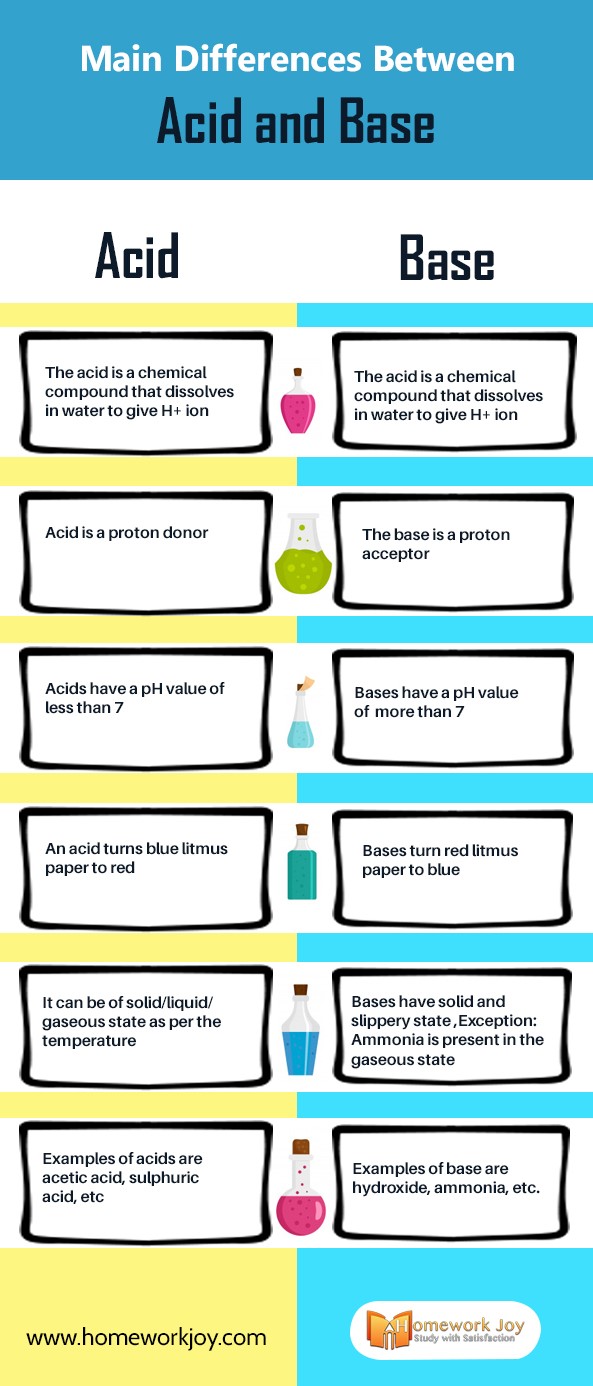Acids and bases are the forms of chemical which play a crucial role in chemistry. They are generally available in our daily life. Some common examples of acids could be citric acid and lactic acid, which is present in lemon. The common examples of bases could be cleaning products like bleach and ammonia. Every liquid in our everyday life is either acid or base, except water.
The definition of acid and base evolved with time through three sets of theories, such as Arrhenius, Lewis, and Bronsted theories. The substances which act as both base and acid are known as amphoterism. Water is the most common example of it. Since it acts as both acid as well as the base. Examples of acids are acetic acid, sulphuric acid, etc. and examples of the base are hydroxide, ammonia, etc.
Acid Vs. Base
The following are some main differences between acid and base.
Arrhenius Definition
The acid is a chemical compound that dissolves in water to give H+ ion more than pure water. Whereas the base is a substance in the aqueous state that donates OH- ion in water and accepts protons.
Lowry Definition
Acid is a proton donor, while the base is a proton acceptor. This concept was introduced by Bronsted-Lowry, generally known as Kauffman, in 1988.
pH Value
Acids have a pH value of less than 7. On the other hand, the Bases have a pH value of more than 7. However, the water has the pH value as seven, which is neither acid nor base. The water is neutral.
Litmus Paper
An acid turns blue litmus paper to red color since they are alkaline in nature. While bases turn red litmus paper to blue color. There is also phenolphthalein indicator in which acids remain colorless, and bases give a pink color.
Taste or Touch
Acids are sour in taste. In contrast, bases are bitter in taste, so never taste them. Besides this, bases give soapy feel or slippery to touch. Most of the acids are solid and can be dangerous to touch.
Importance
Acids are essential in some medicines such as acetic, carbonic, etc. in syrups. While the bases are essential for making antacids such as antacid. However, strong acids and bases can cause severe injury at direct contact.
If you need more help related to similar topics, take instant online homework help from our professors.
